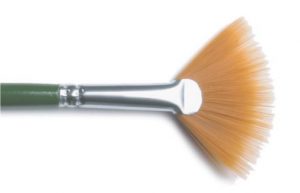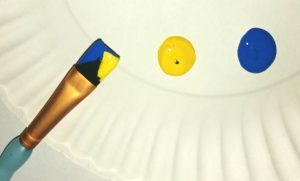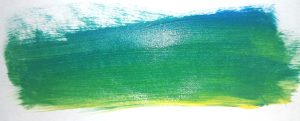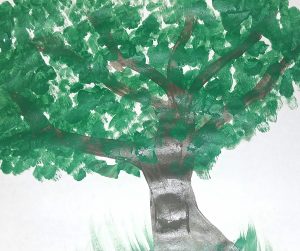When painting, different brushes have different uses. Being familiar with the uses that each brush type is designed for allows you to better, and more confidently, decide for yourself what works best for you in your artistic endeavors.
Learn the Rules Like a Pro, So You Can Break Them Like an Artist. ~Pablo Picasso
We have outlined the common types of brushes and their intended applications followed by a list of common paint techniques that can be easily adopted to paint like a pro. Experiment with each of these and define your style.
Brush Types
Flat brushes have a flat tip and can be used to make thick, consistent strokes or thin lines. These are great for painting the initial background on a canvas, creating blocks of solid color such as fences or buildings, and creating crisp lines and edges using the tip of the flat brush.

Bright brushes are simply flat brushes with shorter hairs. The bristles form the shape of a square rather than a rectangle. Bright brushes are great for the same types of painting techniques and applications as flat brushes, but hold less paint and are better for smaller areas.
Round brushes have a pointed tip and are great for sketching, creating lines of different thickness, detail work and painting small areas. The hairs of the round brush come to a point at the tip and are thicker down the brush. Use a small amount of paint at the very tip to create very fine lines.
![]()
Fan brushes are great for blending backgrounds and skies, as well as adding subtle highlights to darker areas. They are also great for creating textures. Tapping, or stippling, with the fan brush can create some nice effects. Long strokes, especially with a light sweeping touch, also can be quite nice.

Brush Strokes and Techniques
Double-Load Brush Technique is great for blending backgrounds, skies, water, grass, etc. It is a favorite technique for initial color fill and is used in many applications. The technique is simple, yet its result is impressive. Using a flat brush or bright brush, add one paint color to one corner of the brush and another, generally contrasting, color to the other corner of the brush. Paint your area using the flat side of the brush in long strokes back and forth using both sides of the brush.



Dry-Brush Technique is great for creating highlights, shadows, reflections, wisps of clouds, and other attributes that require more of a translucent effect. In this technique, use a brush that is dry and has very little paint loaded on it. Utilize a light touch with brush against painted surface.

Stipple Technique is great for tree leaves and bushes and grasses. This technique is achieved typically with a stipple brush, which is round with a flat tip and firm bristles, a sea sponge, or with a flat brush. A “pouncing” motion or tapping motion is utilized. When using a flat brush, always use the flat side of the brush bristles rather than straight on with the brush so as to avoid pushing those hairs apart.


